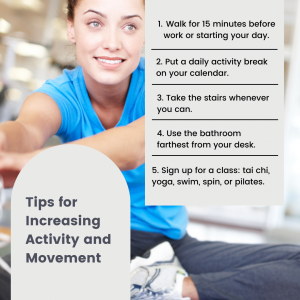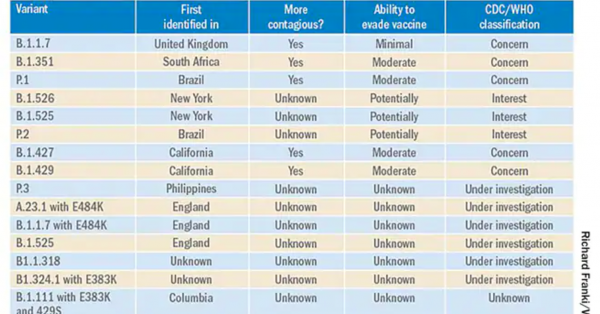New Light on Dementia and Physical Activity
By Courtney O’Bryan, DO
During my day-to-day as a physician I am constantly counseling patients on the importance of regular physical activity for both mental and physical health. What we now know is that our level of physical activity has a much greater impact beyond just the numbers on the scale or how tight the waistband of our jeans fit. In 2008 it was shown that physical inactivity caused nearly 8% of premature mortality from noncommunicable diseases such as coronary heart disease, type 2 diabetes, breast cancer and colon cancer globally. Additionally, the healthcare cost associated with these conditions totaled upwards of 53.8 billion dollars world wide. There has been a steady increase in the rates of physical inactivity, especially in high income countries over the past 15 years. A recent study lead by Peter Katzmarzyk out of Baton Rouge, LA demonstrated proportions of noncommunicable disease that could be attributed to physical inactivity ranged from 1.6% for hypertension to a shocking 8.1% for dementia.
As family and sports medicine physicians, our aim is prevention of chronic disease and illness through healthy lifestyle behaviors. Currently 27.5% of adults globally fail to meet the minimum current guidelines for physical activity. It is no secret that the impact of the pandemic has likely increased this number even more due to the sheltering at home ordinances along with the closure of most gyms and health clubs within the US. So how do we address this day to day, while working from home, social distancing and following local guidelines you may ask. I personally encourage my patients to schedule physical activity breaks throughout the work day the same way they schedule meetings or appointments. This prioritizes the activity and carves out specific time within our inevitably busy days. Whether it is taking a 10 minute break to stand from your desk to do some stretching or using your lunch to take a power walk, every little bit of activity throughout the day adds up. The American Heart Association recommends individuals get a minimum of 150 minutes of moderate intensity or 75 minutes of vigorous aerobic activity (or a combination of both) every week, preferably spread throughout the week. Not only will this activity keep your body and mind healthy but it relieves stress, improves mood, and boosts energy. Physical activity also helps with sleep and reduces your risk of developing chronic illnesses such as dementia and depression. Next time you are visiting with your provider, ask for their tips and advice on how you can get moving more to reduce your personal risk.
Meet Your Provider
Mackenzie Allen, DPT, ATC
Mackenzie was born and raised in southeast Virginia where she received her Bachelor of Science in Athletic Training from Roanoke College. In 2015, she moved to San Diego. Three years later, she received her Doctorate of Physical Therapy, with high honors, from the University of St. Augustine for Health Sciences.
As a board Certified Athletic Trainer, she has performed on and off-the-field athlete evaluations, pre-season concussion screenings, sport specific interventions, and participated in injury prevention programs. Mackenzie has worked as a student athletic trainer for a variety of collegiate and high school sports teams including: soccer, lacrosse, football, field hockey, baseball and basketball. As an athlete herself, she understands the determination, work ethic and drive to achieve one’s goals.
Mackenzie has a passion for treating the orthopedic, sport and pediatric populations. Utilizing evidence based research, Mackenzie creates a multi-modal evaluation and treatment approach. She provides individualized care helping her patients to restore functional mobility and get them back to their sport while preventing future injuries. Her clinical experience includes orthopedics, pediatrics, sports rehabilitation, vestibular rehabilitation with an emphasis on vertigo treatment and concussion management.
In addition to being a Clinical Instructor to Physical Therapy students on internship, Mackenzie is a lifelong learner participating in continuing education courses in various areas of interests to better treat her patients. When she is out of the clinic, you can find her at the beach with her dog, exploring the local gems of San Diego, and trying new recipes in the kitchen. Baking is her second passion!
Why You Should Use the Dirty Dozen List
By Linda Illingworth, RDN
Spring has sprung and so has the new Guide to Pesticides in Produce from Environmental Working Group. Each year EWG reviews pesticide levels in produce from the government data collected by the USDA. While organic produce has become more widely available, pesticide use in conventional produce has been on the rise.
The USDA conducts annual surveys of agricultural chemical use in high producing states. Below is a chart from the 2019 report on Fruit Crops.

Most conventionally grown produce has been treated with both herbicides and pesticides. In theory, spraying crops early or at a specific time before harvest allows these chemicals to degrade and reduce human exposure to a safe level. In reality, pesticides and herbicides can be found in every human, and in many cases are more influential on our bodies at lower rather than higher exposures. Pesticide and herbicide exposure may be particularly challenging to infants, children, and during fetal development in pregnancy. These are times of rapid growth and development during which DNA synthesis may be more at risk of damage due to toxin exposure.
Most herbicides and pesticides fall into the category of POP’s or persistent organic pollutants. These POPs effect the human hormone or endocrine system, disrupting normal regulation of cellular growth and signaling. This can have a great impact on our health because the endocrine system is like a brain for the body. It is in charge of regulating all other processes. Cells that develop too fast might foster cancer, cells that are oxidized or damaged can lead to cardiovascular or neurological disorders. In fact, Paraquat which has been linked to Parkinson’s disease, is still in use by the U.S. yet has been banned in other countries.
Perhaps the most well-known herbicide is RoundUp, commonly used by consumers around their homes, and in agriculture to control weeds. The World Health Organization has named glyphosate in RoundUp as a probable carcinogen. In a landmark judgement in 2018, a U.S. court found glyphosate to be responsible for causing cancer in a school grounds keeper. Subsequently Bayer, the maker of RoundUp, has agreed to pay $10 billion to settle tens of thousands of cancer claims. Today, the product is still marketed without a warning label.
There are thousands of chemicals in consumer products, and many more are not disclosed to the government due to proprietary claims by the manufacturer. While not all chemicals are harmful, use of the cautionary principle is best applied to reduce the risk of potentially undesirable effects on our health. As a consumer, the best defense is to purchase food and products with fewer and safer ingredients. You can start by visiting ewg.org to get a copy of their Dirty Dozen list. You can also download the Dirty Dozen app to your smartphone. The app is easy to use while you shop and gives clear guidance on which produce has higher residues of herbicide and pesticide which may be best purchased as organically grown. The companion Clean 15 list tells you which produce can be purchased as conventionally grown due to their low residue for herbicides and pesticide.
You can download a printable list of the Dirty Dozen here. Look for organic produce that is in season or on sale. In season organic produce is usually more affordable and often comparable in price to conventional produce. The most important thing is to eat fruit and vegetables. So if organic produce is not readily available, keep eating produce anyway. Organic or not, fruit and vegetables are still your best sources of disease fighting antioxidants.
Stay safe San Diego.
As we continue the process of vaccination against COVID-19, we strive to bring you timely and helpful information. Our providers and staff are here to answer your questions and help you keep up with all of your healthcare needs.
Please call us to schedule important checks on your health, refill prescriptions, referrals, or any other health need. You can also request prescription refills and appointments through MyChart.
Chronic conditions that may increase risk of worse COVID-19 symptoms include diabetes, asthma, COPD, heart problems, impaired immune function, difficulty getting enough sleep, or high levels of stress. It’s important to maintain your health if you have a chronic condition. Ask us about COVID-19 testing and let us help manage your symptoms if you get sick. We are here for you whether you need a well check, advice on testing or care for COVID-19, or have any other health care need. Our Urgent Care office in Pacific Beach is always available to you. Simply call first so we can be sure to see you safely in clinic.
SDSM is dedicated to practicing all CDC recommended infection control measures. Clinics disinfect between each patient interaction with CDC approved disinfectants, employ proper social distancing measures, and follow additional CDC infection control guidelines. When visiting our clinics you can expect fewer people in waiting rooms, to wear a mask or face covering, use hand sanitizer on entry, and be screened for COVID-19 symptoms before entering patient care areas.
Don’t forget telemedicine appointments are an option that can save you time and travel. We are experts in telemedicine and can coach you on self-care at home, provide advice on medications or necessary prescriptions, and can evaluate your need for an in-person visit. We continue to recommend that anyone with cold/flu/COVID-19 symptoms and patients at increased risk of complications from COVID-19 are best addressed through telemedicine appointments.
Please call us if you feel ill, even if you believe you had no exposure to someone who has been sick. We urge you to observe stay at home measures, avoid traveling, take care to wear a mask, practice a minimum of six foot social distance from others, wash your hands frequently, and avoid touching your face, mouth, and nose. Working together, we can help you to stay safe, healthy, and thrive.
Yours in health,
The Physicians and Staff of San Diego Sports Medicine and Family Health Center

